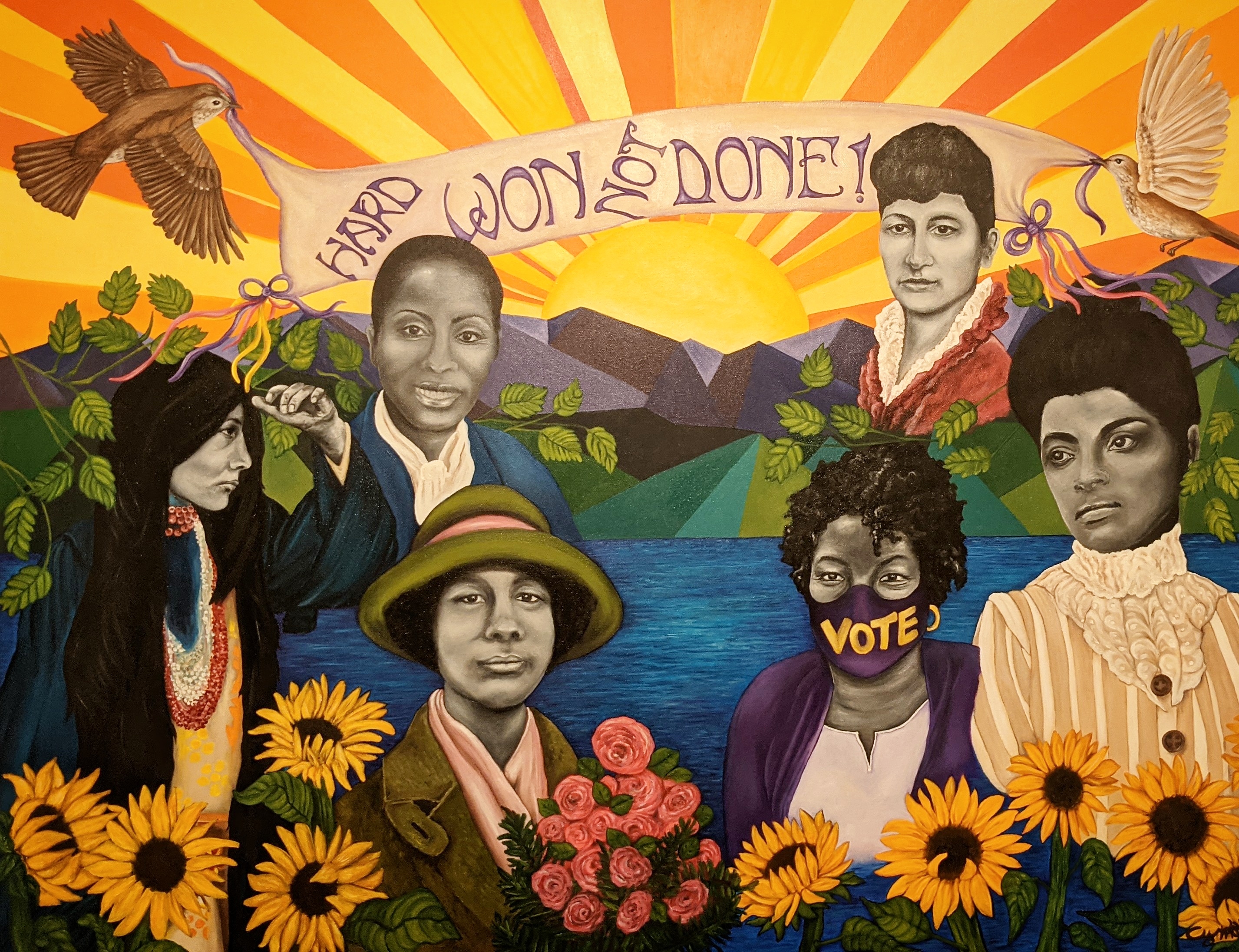Click for full article: The Light of Truth Upon Them, Artist Cynthia Cagle
Click for artist biography: Cynthia Cagle

On Display
March 9-31. Vermont State House, Card Room, Monday-Friday, 8 AM – 4 PM
April. Vermont Historical Society Museum, 109 State Street, Montpelier.
The Vermont Suffrage Centennial Alliance commissioned The Light of Truth Upon Them, an oil painting by Xicana artist Cynthia Cagle of South Burlington, to commemorate voting and the 2020 centennial of the 19th Amendment.
Cynthia Cagle’s work explores the metaphysical relationship between identity and nature. Using her experiences as a biracial woman, Cynthia creates paintings, collages, and murals that investigate themes relating to biology, relationships, generational trauma, and the impact of colonialism.
Combining the struggles of Indigenous, Black, Latina, and Asian people, the history of the fight for the vote stretches back before 1920 and is ongoing to this day. Cagle’s painting showcases the perseverance of those who stood up—who stand up—in the face of injustice in Vermont and across the country.
As an artist with indigenous ancestry, Cynthia’s art confronts notions of progress. When one group moves forward towards independence and autonomy, often another is left behind, such as Native Americans. Her art is a fierce condemnation of staggered freedoms; peeling back the facade of more comfortable notions of equality to expose injustice.
Six women are featured in Cagle’s painting.
Zitkala-Ša, a member of the Yankton Dakota Sioux, argued for women’s rights in her graduation speech from White’s Indiana Manual Labor Institute in 1895.
Before she became a force in the suffrage movement, Ida B. Wells—born into slavery in Mississippi—documented the horrors of lynching through courageous journalism. Wells wrote, “The way to right wrongs is to turn the light of truth upon them.” She saw voting rights as inextricable from civil rights and the fight against racism.
Her work was shared by Vermonter Lucy J.C. Daniels of Grafton, who picketed the White House in 1917 and was arrested, tried, sentenced, and incarcerated. She also championed for Black and working-class women to gain the vote.
Mabel Ping-Hua Lee, the first Chinese woman to earn a doctorate in economics, fought for the right to vote alongside white suffragists in the early 20th century. However, due to the Chinese Exclusion Act, she herself was unable to vote until 1943.
These women paved the way for other activists and lawmakers, including Vermont’s own Louvenia Dorsey Bright, the first black female legislator elected in Vermont in 1988, and Stacey Abrams of Georgia, who continues the fight today to expand access to voting regardless of political party, and knock down voter suppression laws.
The Light of Truth Upon Them tells the story of women’s crusade—Black, Indigenous, Asian, Latina, and white—to have an equal voice in American democracy. These women, though separated by time and circumstance, represent the unified front of freedom seekers intent on providing every person, regardless of race or sex or class, with the fundamental human right to vote. This chronicle is part of Vermont’s history, and the women on the shores of Lake Champlain, pictured against the background of sunflowers and the Adirondacks, remind us that the story of the fight to vote is both our legacy and our future.
